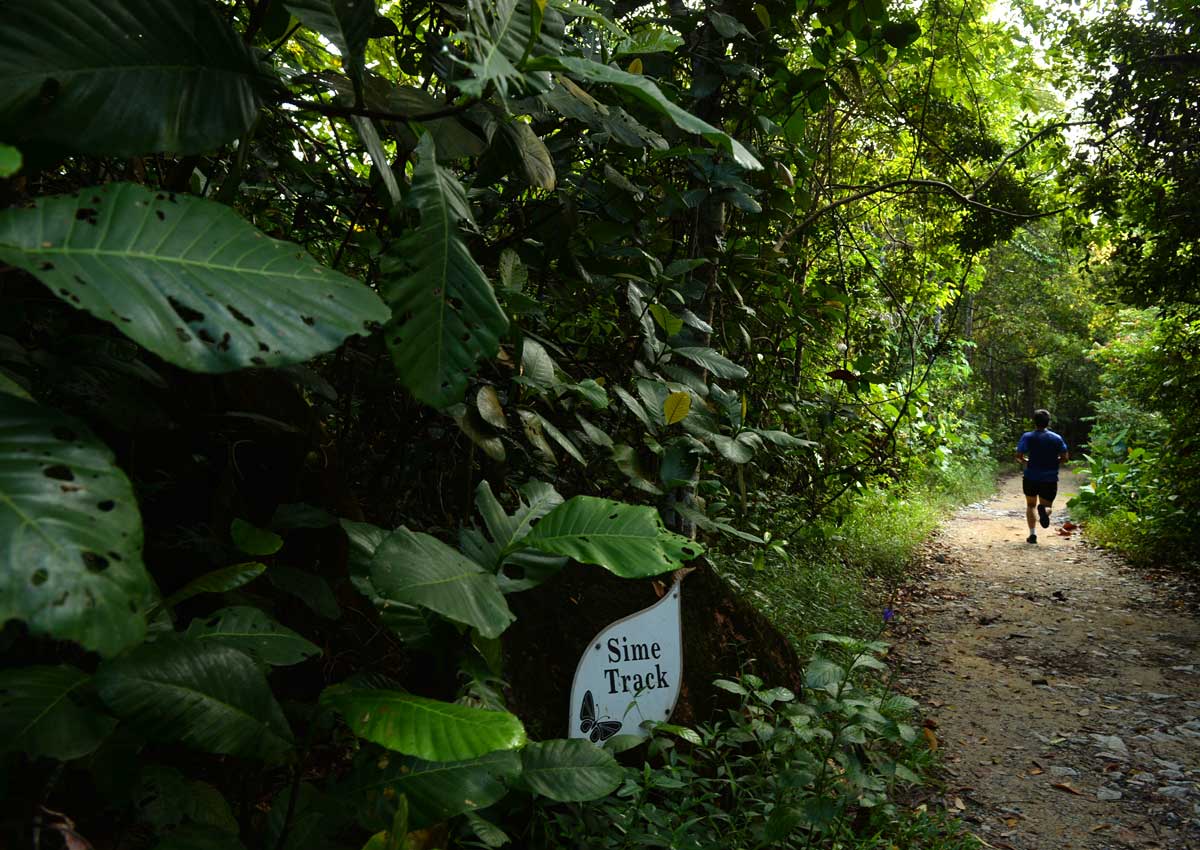They provide shade and cool the air when water evaporates from their leaves
Did you know that the patch of trees behind your house might save you money on air-conditioning bills?
This has to do with the way plants cool the air when water evaporates from their leaves. With climate change already bringing higher temperatures and more extreme weather events, the importance of greenery is set to increase.
“We are in a climate where every degree counts in terms of human comfort,” said Associate Professor Matthias Roth of the department of geography at the National University of Singapore (NUS).
This is especially so in a densely built city like Singapore, where concrete surfaces absorb heat during the day and the “canyons” of closely packed buildings prevent it from escaping at night.
This is known as the urban heat island effect and was the subject of a recent study by Prof Roth in collaboration with his master’s student, Mr Reuben Li.
They deployed about 40 temperature and humidity sensors all over Singapore, monitoring hourly changes in different environments over about three years.
The study found that rural areas with few buildings, like Lim Chu Kang, were about 3 deg C cooler at night than urban areas such as Orchard Road. This is because a flat and open rural area allows heat to escape easily at night.
If the night is clear and calm, the rural area can be up to 7 deg C cooler as there are no clouds to prevent heat from escaping into space, and no wind blowing in warmer air from the city.
In the day, however, rural areas are as warm as urban areas, the researchers found. This is where having tall trees can make a difference.
The temperature sensors showed that at midday, forested areas are about 1.5 deg C cooler on average than urban areas. This is because trees provide shade as well as evaporative cooling.
Even a small park in the city can have a cooling effect. An example is Telok Kurau Park, a rectangular plot measuring 187m by 97m with large shady trees, in the midst of a sprawling estate of low-rise housing.
A study by Prof Roth’s honours student, Ms Khoo Yuan Ling, in 2004 found that on a clear and calm night, the park can be up to 2 deg C cooler than the surrounding area.
She also found that the cooling effect can be felt beyond the park boundary up to a distance roughly equal to its width. This is known as the edge effect.
Said Prof Roth: “If you remove the pocket of green area, you remove the edge effect as well.”
The result? Increased discomfort and higher air-conditioning bills as people fight the heat by blasting their air-conditioning.
The Centre for Climate Research Singapore has projected an increase in surface temperature of 1.4 to 4.6 deg C across the country by the end of the century. While global warming is impossible for Singapore to control on its own, it still has a role to play.
“What we can do locally is to try to mitigate the heat island effect,” said Prof Roth.
The Singapore Government has worked hard to preserve greenery in the country, which ranks among South-east Asia’s foremost economic powerhouses. Almost half of the island is green. The total area of greenery in Singapore increased from 35.7 to 46.5 per cent from 1986 to 2007, according to a report by the National Parks Board.
The Urban Redevelopment Authority (URA) says that 9 per cent of Singapore’s land has been set aside for parks and nature reserves, and 19 per cent for defence. A large proportion of the land for defence use is wooded.
URA also has policies in place to ensure that greenery and development go hand in hand.
“In all new regional growth centres, it is now mandatory for developers to replace 100 per cent of the site area they displaced on their new buildings in the form of greenery and communal spaces,” said a URA spokesman.
Mr Kavickumar Muruganathan, head of eco-certifications and lead environmental engineer at the Singapore Environment Council, pointed out that greenery serves many purposes. Besides cooling the air and being home to wildlife, it relaxes the mind and acts as a natural noise barrier.
“It even acts as an effective flood alleviation mechanism,” he added, citing the ability of vegetation to retain water.
linyc@sph.com.sg

This article was first published on March 11, 2016.
Get a copy of The Straits Times or go to straitstimes.com for more stories.






